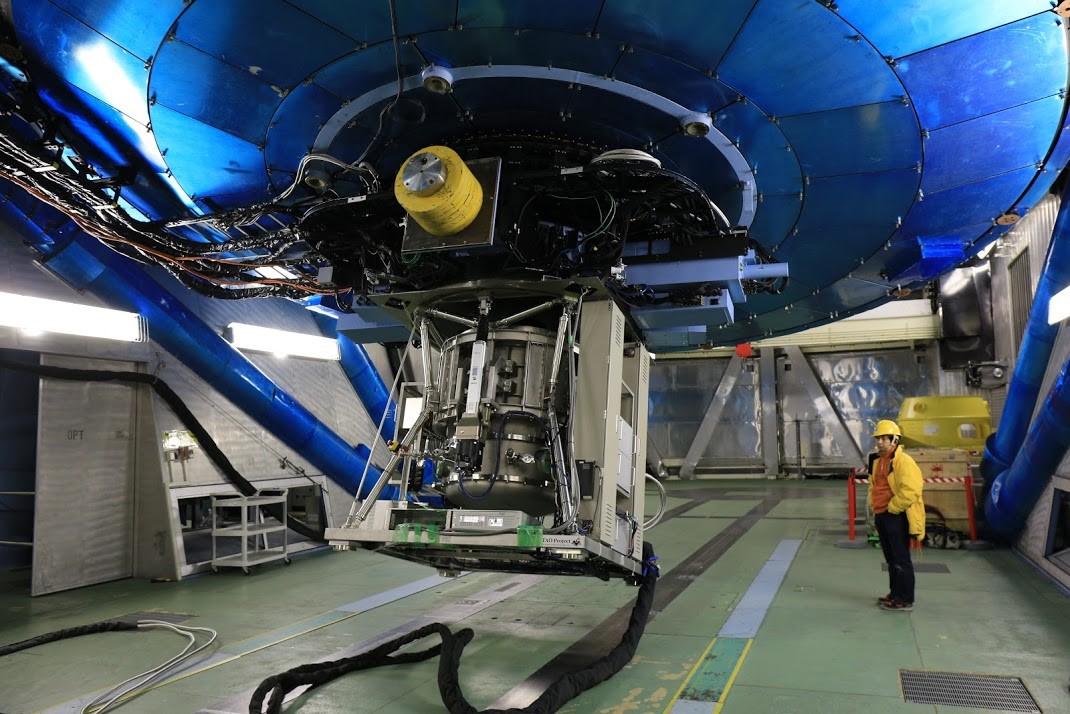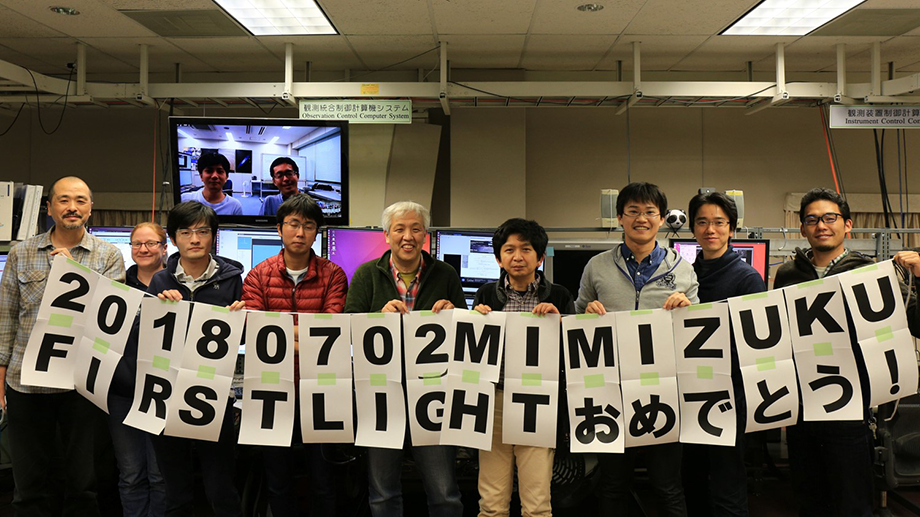
|
TAO Project |
|
The TAO project

|
MIMIZUKU achieved first light at Subaru telescope!MIMIZUKU, the mid-infrared instrument for the TAO 6.5-m telescope, successfully achieved first light at the Subaru telescope of the National Astronomical Observatory of Japan (NAOJ). MIMIZUKU is a mid-infrared instrument developed for the TAO 6.5-m telescope. It was transported to the NAOJ Hawaii Observatory in October 2017 for engineering observations at the Subaru telescope and has been tested in Hawaii. The purposes of the test observation are (1) performance evaluation of the instrument through actual observations, and (2) demonstration of high-precision observation capability realized by the new mechanism "field stacker". The performance evaluation tests can be understandably performed with the TAO 6.5-m telescope. However, the TAO site is not suitable for such long-time human works, because the air is too thin due to the high site altitude (5,640 m). Therefore, before transporting the instrument to the TAO site, it is important to evaluate its performance through actual observations and to improve functions based on the results, in order to ensure the secure start-up of the instrument and prompt scientific observation operation. Field stacker is a special optical device mounted on MIMIZUKU that realizes simultaneous observation of two celestial bodies, which cannot be observed at the same time usually because they do not fit in the field of view of the camera. By using this device, MIMIZUKU is expected to be able to measure the brightness of celestial bodies with high precision, then, we aim to demonstrate its effect in the test observations. The Subaru telescope is one of the few telescopes that can be used for mid-infrared observations. Therefore, MIMIZUKU was designed to be mounted on the Subaru telescope as well. Our test observation proposal at the Subaru telescope was accepted after two reviews by the observatory and resulted in the test observation this time. The development of MIMIZUKU began in 2009. And this year, as the tenth year's milestone, we finally achieved first light, the first observation of a real celestial body.
In the observations using field stacker, it is impossible to place the two celestial objects that we want to observe in the field of view, unless the telescope and the field stacker are operated properly. Therefore, whether our observation control program can introduce the celestial objects or not was a big issue. In order to make this program work properly, it is necessary to fine-tune some parameters by checking the image of a celestial body after installing MIMIZUKU on the telescope. After doing required calculations in the oxygen-less environment of the summit (even though it was a better environment than the TAO site), we updated the program parameters and tried to introduce two celestial bodies. In the first trial, we failed to introduce the observation targets (as expected). But, in the second trial after re-calculating the parameters, we achieved stunning success, and there were cheers in the observation room. Demonstration of precise measurement of celestial brightness will be achieved by analyzing obtained observation data. Please look forward to future analysis results. In this test observation, we confirmed that the "imaging" functions to acquire images of celestial bodies and the field stacker device work as expected. However, MIMIZUKU has another capability, "spectroscopy" functions to investigate celestial light in more detail, and we need to test it as well. In addition, when field stacker is used for spectroscopic observations, more difficult introduction of celestial bodies is required. In order to carry out these tests, we are planning another test observation in December 2018 as well. Although we just finished the first test observation, preparations to make the second test observation succeed have already begun. Please also look forward to this further report.
Copyright(c) 2007-2018 TAO Project, Institute of Astronomy, Graduate School of Science, University of Tokyo
|



